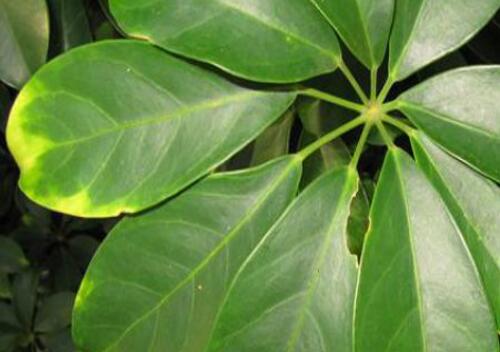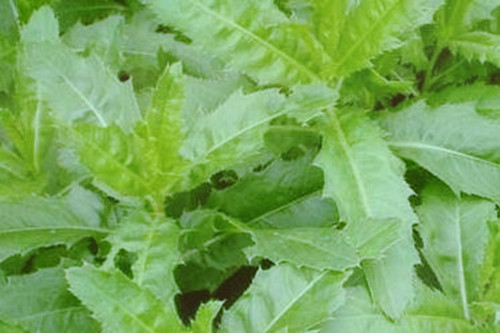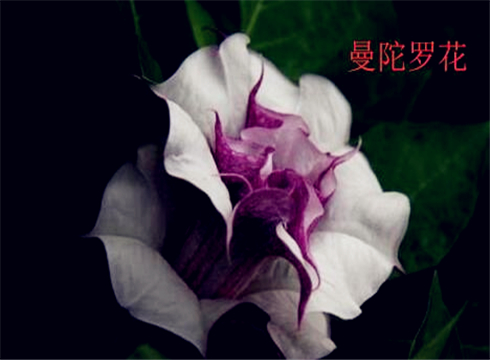The leaves of duck paw wood turn yellow, what if the leaves fall off? Master these maintenance tips, no matter how difficult it is to grow.
Duck palm wood is more common in our life, although it is said that duck palm wood is a relatively easy to raise plant, it will still cause yellowing and loss of leaves for some reasons. Today, I will take you to find out exactly what causes it and how to solve it.

Causes of yellowing of duck paw wood leaves
1. The basin soil is too dry: it causes the leaves to droop and yellow and fall off. Because the duck palm wood is not resistant to drought, keeping the basin soil moist is the key. However, it is also necessary to master that the watchman is not dry or watered, and it is better to water him at the slightest bit of white.
2. The pot is too wet: it leads to rotting roots. The duck palm wood can be removed from the basin, removed from the soil, and then cut off the rotten root system, re-cultivated with new soil, watered and placed in a cool place.
3. Excessive fertilization leads to root burning. Remove the duck palm wood from the basin, wash the root with clean water, rinse the root several times continuously, then soak the root in clean water, wait for the leaf to recover, change the newcomer to plant again.
4. Insufficient fertilization: goose palm wood has certain requirements for fertilizer, especially in the growing period, if there is not enough fertilizer, the leaves will turn yellow and fall.
5. Too little light: goose palm wood prefers semi-shade, which is generally cultivated under bright scattered light. If the room is relatively dark, it will affect the growth of goose palm wood, resulting in yellowing and losing leaves.
6. Excessive light: excessive light is also one of the reasons for the loss of leaves of goose palm wood. The leaves of goose palm wood are easy to wither and yellow when exposed to the sun, especially when they are suddenly moved from places where there is no sun to places where the sun is strong for breeding. the loss of leaves will be more serious.
The solution to the yellowing of duck foot wood leaves
1. Apply enough fertilizer, apply good fertilizer
Sufficient nutrients are needed during the growth period of duck foot wood, and fertilized once a week in summer, granular fertilizers such as nitrogen, phosphorus and potassium can be selected and applied after loosening the soil. From April to September, diluted fertilizer and water should be applied once a month to ensure sufficient nutrients in the basin soil, and certain elements should not be applied partially.
If you apply too much fertilizer, you can remove the duck foot wood from the basin, wash the roots with clean water, rinse the roots several times continuously, and then soak the roots in clean water. After the leaves are restored, they can be replanted with new soil.
2. Watering correctly
Be careful not to water too much when watering, just keep the basin soil moist. Watering is about once every 3-4 days in spring, summer and autumn, and watering should be reduced in winter. When the air is dry, often sprinkle some water on the leaves to increase the humidity.
3. Ensure moderate sunshine
Duck foot wood likes shade, as long as it is placed in a bright place, it can grow normally. Except in winter, the plant can be maintained outdoors or by the window to avoid direct light and ensure enough scattered light. Move to the place where the indoor sun can shine in winter and increase the temperature appropriately.
4. Prevention of diseases and insect pests
Usually careful maintenance, timely ventilation, diseased leaves, yellow leaves are removed in time. Fungicides are always available at home and sprayed once a month after dilution, which can effectively prevent the occurrence of diseases and insect pests.
Time: 2019-04-07 Click:
- Prev

What are the effects and effects of rural wild vegetables (small thistle)? What kind of disease can you cure? How do you eat it?
There are many kinds of wild vegetables in the countryside, such as Portulaca oleracea, plantain, bitter herb and so on. They all have different functions. Today, I would like to introduce to you another kind of high-quality wild vegetables, also known as thistle. What are the effects and effects of the thorn herb? What kind of disease can you cure? How do you eat it? Brief introduction of Castanopsis grossedentata
- Next

Are the top ten flowers of death, mandala flowers, poisonous? Can it be poisoned by smell? Is it the same as the other shore flower? What's the difference?
In rural areas, there is such a flower called sheep spicy seed, in fact, its real name is mandala, which can be used not only for anesthesia, but also for the treatment of diseases. But some people use mandala flowers to do home decoration, this is not allowed. Because the mandala flower is poisonous, so it can be poisoned if it smells? Is it the same as the other shore flower?
Related
- Fuxing push coffee new agricultural production and marketing class: lack of small-scale processing plants
- Jujube rice field leisure farm deep ploughing Yilan for five years to create a space for organic food and play
- Nongyu Farm-A trial of organic papaya for brave women with advanced technology
- Four points for attention in the prevention and control of diseases and insect pests of edible fungi
- How to add nutrient solution to Edible Fungi
- Is there any good way to control edible fungus mites?
- Open Inoculation Technology of Edible Fungi
- Is there any clever way to use fertilizer for edible fungus in winter?
- What agents are used to kill the pathogens of edible fungi in the mushroom shed?
- Rapid drying of Edible Fungi

